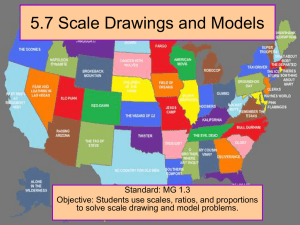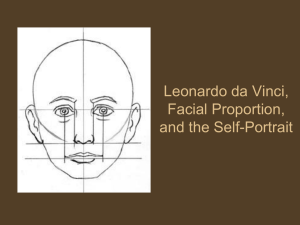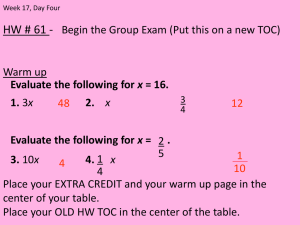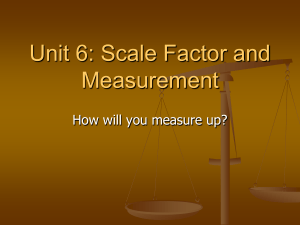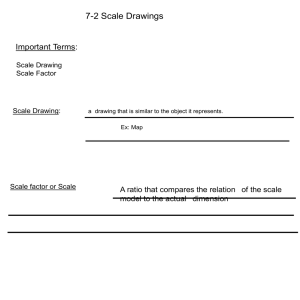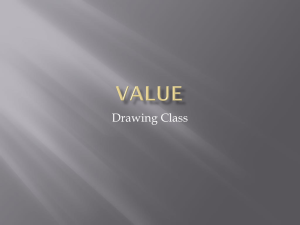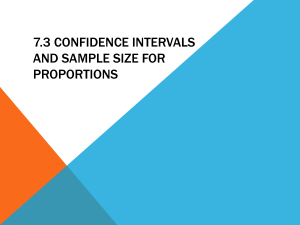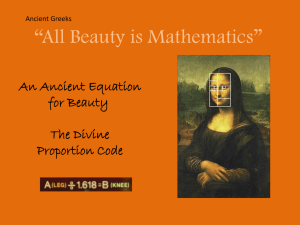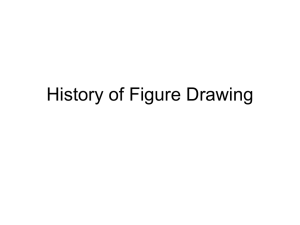Powerpoint—3/4 view self
advertisement
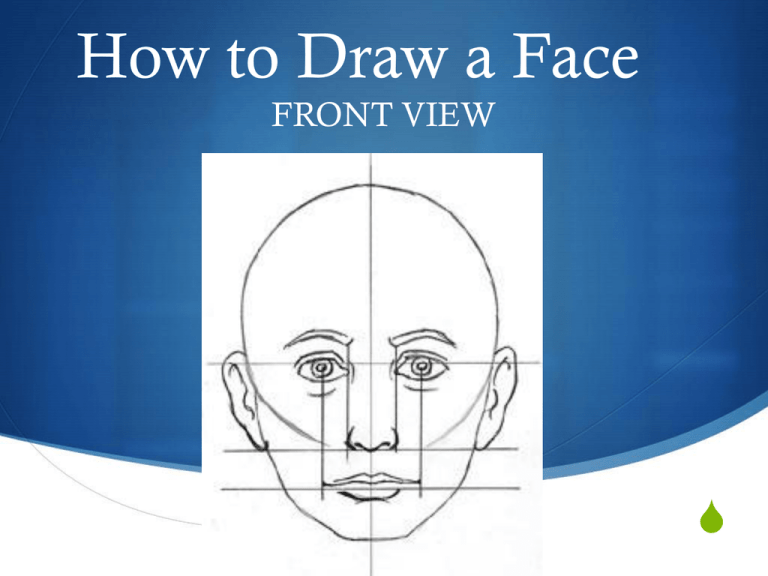
How to Draw a Face FRONT VIEW S Leonardo Da Vinci S Leonardo once wrote, “Know the proportions in human beings and other animals and learn the forms of all things on the earth. The more you know, the better you will paint.” Leo’s Notebook S Leonardo was constantly taking notes about the world around him. He filled many notebooks with sketches of animals, people, and nature. S He took many measurements and was always trying to find a perfect balance so that his art had proportion. Another Drawing from Leo’s Notebook: What is Proportion? S Simply… S Proportion means that you make the parts fit well with each other. S More Specifically… S Proportion in art is the relationship between two or more elements. S When we talk about proportion in art works we are using comparing the size of one object in the artwork to the size of another related object in the artwork. You can also compare: S S S Good Proportion height, width and depth of the objects size of one area to the size of another area amount of space between two or more elements S Proportion is usually not even noticed until something is out of proportion. For example, if a person has a head larger than their entire body, then we would say that they were out of proportion. Out of Proportion Other works with excellent Proportion: The Self-Portrait: S Here’s a drawing Leonardo drew of himself as an old man. S A picture that an artist makes of him/herself is called a self-portrait. Face Mapping S Face Mapping is a technique used to set up the proportion of the features on a face. S By drawing lines that act as guides, you can figure out where parts go and how large they should be. S This will help make your face look more realistic. S With some practice, maybe you’ll be the next Leonardo da Vinci! Let’s Begin… Draw an Oval in the center of your paper Using a ruler, split the oval in half horizontally and vertically Make sure to draw lightly. These lines will get erased. These are called lines of symmetry because your face is symmetrical. This means that the features on your right are the same as your features on the left. The top and bottom are a different story. Draw a line between the midline and the top of the oval. Draw a line between the midline and bottom of the oval Draw a line between the bottom line and the chin Each of these lines represents where something on your face will be drawn. Watch carefully as each section is revealed. Hair Line Middle of the eyes Bottom of the nose Bottom of the bottom lip Drawing your Self-Portrait: •Eyes •What shape are eyes? Drawing your Self-Portrait: •Parts of the eye Pupil = Black part of your eye, located in the center of your iris, allows light into your eye so you can see Tear Duct = Little pink bump where your tears come out Eyeball = White part of your eye Iris = Colored part of your eye DRAWING THE EYES Did you know that the eyes are actually located in the center of the head, contrary to popular belief ? You could also fit five eyes in the width of your head. Don’t forget to draw your eyebrows right above your eyes! Your eyebrows are more than thin lines. Make sure to take the extra time to draw the hairs. Which direction do they grow? See what I mean? Drawing your Self-Portrait: •Eyes • Looking at your eyes in a mirror draw your iris, pupil, eyelid, and any other lines or qualities that make your eye unique. • Iris • Colored Part • Circle • Usually hidden on the top or bottom by the eyelid • Pupil • Black • Circle • Center of Iris HOW DO WE DRAW A NOSE? Drawing the Nose Notice the placement of the nose. The bottom of the nose rests on the third line down Drawing the lips •Draw your top and bottom lips to create your mouth. •Think of your upper lip as two small circles side by side. •Think of your bottom lip as one bigger oval. How do the lip muscles look? Think about how they function together and why it is the shape that it is. Drawing the Mouth Notice that the bottom of the bottom lip touches the bottom line. Also notice that the mouth stretches from the middle of one eye to the middle of the other eye. Drawing the Ears Notice that the ears stretch from the middle of the eyes to the bottom of the nose Drawing the Hair Notice that the hairline starts at the top green line Drawing the Neck Notice that the neck stretches from ear to ear. Some neck widths will vary depending on the person Finishing Up Erase all of your mapping lines. You can now add extra details like strands of hair, eye lashes or any other unique marks. You can also use value to make facial features appear three dimensional Make sure that your chin and jaw lines don’t remain a perfect oval. “Flesh out” the chin by looking at your own as an example.
